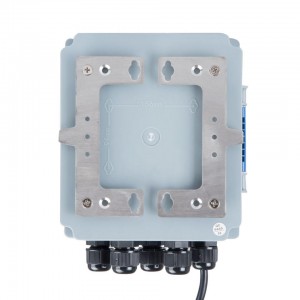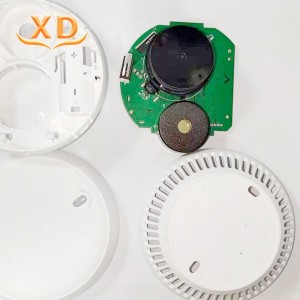IOT wireless multi-jet dry type smart water meter
Fine Materials
lts made of brass, which isresistant to oxidation, rustand corrosion, and has along service life.
Accuratemeasurement
Use four-pointer measure-ment, multi-stream beam,large range, good measure-ment accuracy, small startingflow, convenient writing.accurate measurement.
Easy Maintenance
Adopt corrosion-resistantmovement, stable perfor-mance, long service life,easy replacement andmaintenance.
Shell Material
Use brass, gray iron,ductile iron, engineeringplastics, stainless steel andother materials, applica-tion widely.
Technical Characteristics

◆The point-to-point communication distance can reach 2KM;
◆ Fully self-organizing network, automatically optimizing routing, automatically discovering and deleting nodes;
Under the spread spectrum reception mode, the maximum reception sensitivity of the wireless module can reach -148dBm;
◆ Adopting spread spectrum modulation with strong anti-interference ability, ensuring effective and stable data transmission;
◆Without replacing the existing mechanical water meter, remote data transmission can be achieved by installing a wireless communication LORA module;
◆The routing function between relay modules adopts a robust mesh like (MESH) structure, which greatly increases the stability and reliability of the system's performance;
◆ Separate structure design, the water supply management department can install the ordinary water meter first according to the needs, and then install the remote transmission electronic module when there is a need for remote transmission. Laying the foundation for IoT remote transmission and smart water technology, implementing them step by step, making them more flexible and convenient.
Application Functions
◆ Active data reporting mode: Proactively report meter reading data every 24 hours;
◆ Implement time-division frequency reuse, which can copy several networks in the entire area with one frequency;
◆ Adopting a non magnetic communication design to avoid magnetic adsorption and extend the service life of the mechanical parts;
The system is based on LoRa communication technology and adopts a simple star network structure, with low communication delay and long and reliable transmission distance;
◆ Synchronous communication time unit; Frequency modulation technology avoids co frequency interference to improve transmission reliability, and adaptive algorithms for transmission rate and distance effectively improve system capacity;
◆ No complex construction wiring is required, with a small amount of work. The concentrator and water meter form a star shaped network, and the concentrator forms a network with the backend server through GRPS/4G. The network structure is stable and reliable.

Parameter
|
Flow range |
Q1~Q3 (Q4 short time work not change error) |
|
Ambient temperature |
5℃~55℃ |
|
Ambient moisture |
(0~93)%RH |
|
Water temperature |
cold water meter 1℃~40℃, hot watr meter 0.1℃~90℃ |
|
Water pressure |
0.03MPa~1MPa (short time work 1.6MPa not leak, no damage) |
|
Pressure loss |
≤0.063MPa |
|
Straight pipe length |
fore water meter is 10 times of DN, behind water meter is 5 times of DN |
|
Flow direction |
should be the same as the arrow on the body directs |















